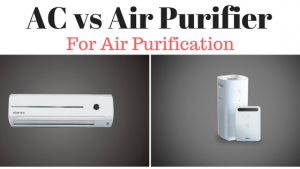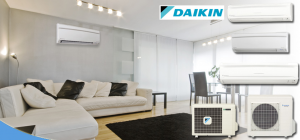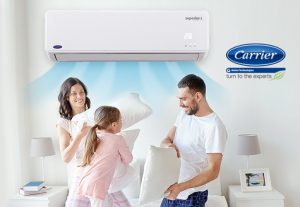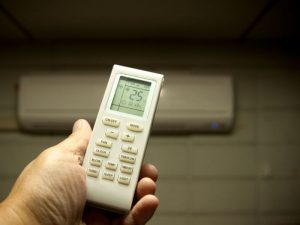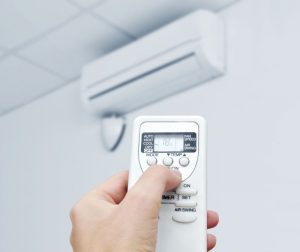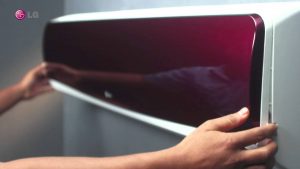Best Air Purifiers in India in 2024 Buying Guide
Increasing industrialization coupled with rapid urbanization and burning of fossil fuels has resulted in rising air pollution. But rising disposable income along, changing lifestyle and increased awareness about degrading air quality have bought air purifier in the spotlight. Adding to it, the declining air purifier prices have attracted a good amount of consumer attention recently. If you are contemplating to buy an air purifier and looking for Best Air Purifier in India in 2024 then you must read this article till the end.
To gauge the seriousness of the air pollution, peruse through the following statistics:
- 13 out of 25 most polluted cities in the world are in India
- 4 million school children in India have developed irreversible lung damage from poisonous air
- Indoor air pollution can be 10 times more toxic than the outdoor pollution
With the rate of air pollution around the world rising perilously, air purification technology is becoming a dominant force in the global market. High indoor air pollution in India is usually attributed to burning of an incense stick, mosquito coil alongside emission from cooking and pet dander. That’s where air purifiers come to rescue. The main job of the air purifiers is to remove harmful elements present in the air which could result in respiratory problems. Below is an exhaustive list of pollutants that air purifiers target inside the home:
- Pollens
- Allergen
- Dust
- Mites
- Mold
- Soot
- Smoke
- Pet dander
- Fungi
- Germs
- Bacteria
- Viruses
But the main problem is that with so many options in the market today, trying to find the right air purifier for your home is challenging. To a lot of people, air purifiers are complicated to understand and for good reasons too. It’s nothing wrong with that thinking because every air purifier uses a different method to clean the air and this can cause difficulty in choosing the correct one. In this buying guide, we will tell you 7 important points to consider before buying an air purifier.
But before that if you are looking for recommendations on Air Purfiers, then here are some:
Best Air Purifier Models in India in 2024
Some of the best Air Purifiers available on Amazon in India in 2024
 Mi Air Purifier 3 with True HEPA Filter, removes air pollutants, smoke, odor, bacteria & viruses with 99.97% efficiency, coverage area up to 484 sq. ft., Wi-Fi & Voice control - Alexa/GA (white)
Mi Air Purifier 3 with True HEPA Filter, removes air pollutants, smoke, odor, bacteria & viruses with 99.97% efficiency, coverage area up to 484 sq. ft., Wi-Fi & Voice control - Alexa/GA (white)
 Philips AC1215/20 Air purifier, removes 99.97% airborne pollutants, 4-stage filtration with True HEPA filter (white)
Philips AC1215/20 Air purifier, removes 99.97% airborne pollutants, 4-stage filtration with True HEPA filter (white)
 Coway Professional Air Purifier for Home, Longest Filter Life 8500 Hrs, Green True HEPA Filter, Traps 99.99% Virus & PM 0.1 Particles, Warranty 7 Years (AirMega 150 (AP-1019C))
Coway Professional Air Purifier for Home, Longest Filter Life 8500 Hrs, Green True HEPA Filter, Traps 99.99% Virus & PM 0.1 Particles, Warranty 7 Years (AirMega 150 (AP-1019C))
 Philips Air Purifier Ac2887/20,Vitashield Intelligent Purification,Long Hepa Filter Life Upto 17000 Hours,Removes 99.9% Airborne Viruses & Bacteria,99.97% Airborne Pollutants,Ideal For Master Bedroom
Philips Air Purifier Ac2887/20,Vitashield Intelligent Purification,Long Hepa Filter Life Upto 17000 Hours,Removes 99.9% Airborne Viruses & Bacteria,99.97% Airborne Pollutants,Ideal For Master Bedroom
 SHARP Room Air Purifier FP-F40E-W with Plasmacluster™ Ion Technology, 7 Years Warranty, Additional HEPA Filter, Haze Mode, Odour & Dust Sensor, True HEPA & Deodorizing Filter | Coverage Area: up to 320 ft²
SHARP Room Air Purifier FP-F40E-W with Plasmacluster™ Ion Technology, 7 Years Warranty, Additional HEPA Filter, Haze Mode, Odour & Dust Sensor, True HEPA & Deodorizing Filter | Coverage Area: up to 320 ft²
 Dyson Pure Cool Link Air Purifier, HEPA + Activated Carbon Filter, Wi-Fi Enabled, TP03 (White/Silver), Large
Dyson Pure Cool Link Air Purifier, HEPA + Activated Carbon Filter, Wi-Fi Enabled, TP03 (White/Silver), Large
 Dyson Purifier Cool Air Purifier, HEPA + Activated Carbon Filter, Wi-Fi Enabled, TP07 (White/ Silver)
Dyson Purifier Cool Air Purifier, HEPA + Activated Carbon Filter, Wi-Fi Enabled, TP07 (White/ Silver)
 Blue Star Air Purifier BS-AP490LAN with UV Based Microbe Sterilize technology|removes 99.7% airborne viruses & bacteria|True HEPA 13 Filter|Active Carbon|Ionizer| 915 CMH|900 Sq. Ft. Coverage Area|
Blue Star Air Purifier BS-AP490LAN with UV Based Microbe Sterilize technology|removes 99.7% airborne viruses & bacteria|True HEPA 13 Filter|Active Carbon|Ionizer| 915 CMH|900 Sq. Ft. Coverage Area|
 Dyson Purifier Hot+Cool Air Purifier with heater, HEPA+Activated Carbon Filter, Wi-Fi Enabled, HP07 (White/ Silver)
Dyson Purifier Hot+Cool Air Purifier with heater, HEPA+Activated Carbon Filter, Wi-Fi Enabled, HP07 (White/ Silver)
Buying Guide
Knowing the Indoor Air Pollution Level
The first thing before buying an air purifier is know what the indoor pollution level at your home is. Because it might be the case that you don’t need an air purifier. But the metros and big cities in India are grappling with problem of pollution, so it’s quite likely that indoor air pollution levels would be high. Also, if you frequently use incense stick and mosquito coils then indoor air quality would be bad. In such scenario, you would probably need an air purifier to improve the air quality. Besides these, there are few other scenarios which mandate usage of an air purifier
- Recurrent bouts of seasonal allergies
- Aggravating asthma
- Presence of pets
- House renovation
- Proximity to industrial/manufacturing units
So, if you have any of these circumstances, you should consider buying an air purifier. But if you live in small town or village or in the outskirt of a city with no proximity to the industrial plant, you can probably do without an air purifier. You can check the air quality by entering your city name here: http://aqicn.org/here/
Best Air Purfier Brands in India in 2024
One of the important thing that you will need to decide is which air purifier brand to go with. In fact, there are 20+ brands offering air purifiers in India wit popular ones being:
- Blueair
- Atlanta Healthcare
- Blue Star
- Daikin
- Eureka Forbes
- Godrej
- Honeywell
- Intex
- Kent RO
- LG
- Panasonic
- Philips
- Rowenta
- Sharp
- Xiaomi
Out of these, Philips, Sharp, Eureka Forbes, Honeywell, Panasonic, and Blueair are the top-rated companies globally. Xiaomi’s has recently started offering air purifier and just like their mobiles, air purifier from Xiaomi is widely being accepted by Indian audiences given its aggressive pricing. If you want the premium quality of air purifiers and willing to spend more, then you can go for Philips, Blueair or Sharp. But if you have a thrifty budget then Kent RO, Blue Star or Xiaomi can be a great choice.
Choosing the Right Filtration Technology
Filters is the most important deciding criteria for selecting an air purifier. Different purifiers have different purification mechanism. Four most frequently used air filter technology are:
- HEPA filtration
- Ionic filtration
- Carbon filtration
- Photocatalytic filtration
So, your air purifier would be using one of the four mechanisms. More detailed working of each filtration with their pros and cons is given in the subsequent subsection.
Many air purifiers these days come with prefilters. Prefilter is generally the first layer of filter fitted ahead of the main filter to remove large particles of dust from the air. These are general filters that do the basic job of removing pet hair, dust, and larger microbes. They are generally made of nylon or foam and are usually washable. So, it’s good to have an air purifier with a prefilter. Also, it is recommended that filters are regularly cleaned/replaced depending upon the type of filter used because any type of air purifier won’t work well if the filter is clogged and dusty. If the filter is ignored for a long time it may stop working entirely. Lets us now look at those four-important filtration mechanism in more detail.
HEPA Filter
HEPA filter is the most important class of filter. They are highly efficient in removing pollen, mold spores, fungi, dust, pet dander, hair, mold spores and visible smoke. Formally speaking, HEPA filters are expected to remove at least 99.97% of airborne particles sizing 0.3 µm or more. Microns are one-millionth of a meter. To give you a better idea, the diameter of human hair is 50-100 µm. In fact, humans cannot see anything less than 10 microns.
Beware of the products that claim to be HEPA-type/HEPA-like/HEPA-style as they do not satisfy stringent standardization and may not have been tested in independent laboratories. They can be up to 600% less efficient than original HEPA filters. Real HEPA filters are classified using the five letters A through E, based on how well they capture particles and resist the airflow. Type A is the least effective but still meet the fundamental criteria for HEPA, while type E (at the opposite end of the grading) are military grade filters capable of dealing with even radiological, chemical or biological particles. Based on the combustion characteristics they are also classified as fire resistant (type 1) or semi-combustible (type 2).
Ionic Filter
The ionic filter operates by emitting a cloud of charged ions into the air that reacts with airborne contaminants. The main advantage of the ionic filter is that they can capture ultra-fine particles of size 0.01 microns. They are usually washable, and do not need a replacement for a very long time. Though ionic filters have a lower replacement cycle, it takes a longer time to clean the electrostatic filter. Because these filters use static electricity, particles that make through this filter are like to stick inside the duct line. This accumulated dust is difficult to clean as it is ionically charged and have a tendency to remain glued to the surface.
Activated Carbon Filter
Activated carbon filters are granular or powdered pieces of carbon that have been treated to be extremely porous. In carbon filtering a bed of activated carbon is used to remove contaminants and impurities, using chemical adsorption technique. These filters are most notably used to remove the plethora of hazardous impurities like:
- Smoke
- Chlorine
- Sediment
- Pesticides
- Herbicides
- Volatile organic compounds (VOCs)
- Odor
Most of the new air purifiers now come with an activated carbon filter and it’s imperative to have an activated carbon filter given its natural ability to trap the impurity.
Photocatalytic Filter
Many air purifiers and ACs come with photocatalytic filter. The catalyst in the photocatalytic filter that cleans the air is typically titanium dioxide which is nothing but a semiconductor (like silicon). It is energized by ultraviolet (UV) light—a short-wavelength light of the electromagnetic spectrum that our eyes can’t see.
When a UV light shines on the titanium dioxide, electrons (negatively charged particles inside atoms) are released at its surface. It’s the electrons that do the useful work of filtering the air. The electrons react with water molecules (H2O) in the air, breaking down into hydroxyl radicals (OH·), which are super reactive, short-lived, uncharged forms of hydroxide ions (OH−). These tiny hydroxyl radicals then attack bigger organic (carbon-based) pollutant molecules, tearing their chemical bonds. Post reaction pollutant molecules are converted into relatively innocuous chemicals like carbon dioxide and water. This is a classic example of oxidation and that’s why certain air purifiers that work this way market the filtration as PCO technology (photocatalytic oxidation).
The biggest drawback of the photocatalytic filter is that they also produce small amounts of ozone (O3)—a chemical variant of the oxygen that itself is a toxic air pollutant. So, it’s better to avoid purchasing technologies which use photocatalytic oxidation as it produces ozone into the home environment which can trigger asthma problems.
Room Size, ACH, and CADR
Room size is another important factor to consider while choosing an air purifier. Bigger homes will need larger air purifiers and vice versa. The market is flooded with a plethora of air purifiers, available in all sizes ranging from compact to heavy. So, make you sure you check coverage area parameter and compare it with the room size you wish to purify. It is advisable to opt for a model designed to purify the air in a slightly larger space than the actual room size.
When you’re looking to buy an air purifier you’ll most probably come across two parameters in the specifications list:
- ACH
- CADR
ACH
ACH stands for Air Changes Per Hour. This is one of the least understood ratings and customers often overlook them. However, it’s one of the most notable parameters that should influence your buying decision.
The ACH value tells you how many times the purifier can exchange the air within a room with clean, fresh air every hour. In short is number of purification cycle the purifier completes in one hour. It is commonly expressed in the multiples of ‘x’ e.g: 3x, 4x, 6x etc. The higher number means machine is more efficient in purifying air inside the room. If you have asthma patient at home, it is recommended that you purchase air purifier with a rating of at least 6x.
There is a caveat too. ACH rating is directly tied to the maximum square foot area the air purifier can handle. So, if your purifier comes with a 5x rating and specified to cover 200 sq. ft., this means that if you place the purifier in a room that’s larger than 200 sq. ft, it won’t uphold the 5x exchange rate. Its efficiency would come down and the air might not be as clean.
CADR
CADR stands for Clean Air Delivery Rate. Developed by the Association of Home Appliance Manufacturers (AHAM), this rating helps the consumers know how well the air purifying device can clean the air within a specified room. Interestingly, not all air cleaning devices include a CADR rating on their list of specifications. Only manufacturers that have enrolled for AHAM test independently and received certification, comes with a CADR rating.
The main benefit of CADR rating is that it allows you gauge how large room can the air purifier handle smoothly. But unfortunately, the air purifier market in India is not well regulated and new and unknown manufacturers could list a maximum square footage rating on their purifier that may or may not be 100% accurate.
The CADR rating measures three types of air pollution:
- Dust
- Tobacco smoke
- Pollen
The measurement for each category can range anywhere between 10-450. It is displayed as a set of three numbers separated by a slash. For example, a CADR rating may be 200/210/180 where 200 refers to dust, 210 to tobacco smoke and 180 to pollen. The higher the number, the better is the air purification against that contaminant. So, when you are confused between two or more models that have a same square footage rating then you can refer to CADR rating as the decider.
Weight, Portability, and Noise
Air Purifiers are heavy appliances measuring a few kilograms. If you plan to use a single air purifier for multiple rooms, it is highly recommended that you select the model which is lightweight. Also, it is good to have purifier with castor wheels for better portability. If you plan to use air purifier inside the bedroom during the night, then noise emission levels from the device would become crucial. Air purifiers using Ionization technique or UV technique generally don’t come with a fan and thus are extremely silent. Also, most of the air purifier which comes with a fan also come with a fan speed adjustment option. So, make sure your air purifier has that setting so that you can keep the fan speed to a minimum to mitigate the noise levels.
Maintenance and Running Cost
Air purifier requires high maintenance. Their filters need to be clean regularly, usually by unplugging and wiping the exterior with the wet cloth. Air purifiers coming with a HEPA filter or carbon filter will require routine filter replacements which can be expensive. So, it is advisable to know the filter replacement cost before selecting the model. These types of filters trap pollutants inside them and eventually get clogged up. If overlooked they can be completely choked with trapped particles and won’t be able to purify air further if not replaced. Ionic air purifiers are the least costly device to buy and maintain compared to the ones using HEPA filters. They don’t need a replacement for a very long time.
Though air purifiers might appear pretty frugal device at first appearance, if you plan to run them all through the day, then power rating makes relevance. Higher the power rating more energy it would consume leading to heavy electricity bills. Generally, portable home purifiers have wattage rating around 50-70W. But there are few premium brands which offer purifier with a wattage rating of 20W or lower. If you plan to use air purifier continuously for a longer horizon then don’t miss reading the wattage rating of the device.
Air Purifier Placement
Air purifiers using ionic/UV filtration technology don’t operate by use of a fan, but rather emit ions and radiation in a 360-degree circle. So, placing the appliance near the wall would block its total output. The best placement for such purifiers is at the center of a room. And in case placing an air purifier in the center of the room not feasible for you then it’s best to avoid ionic/UV based air purifiers. Moreover, as we mentioned earlier ionic air purifiers releases ozone which can cause problem to asthma patients.
The air purifiers featuring HEPA filter rely on a fan to pull dirty air into the machine and push clean air back into the room. Placing the machine under a table, behind the sofa, against a wall or in a place that blocks this stream of air flow will hamper its performance. The good thing is even if not placed at the center, but at least 2-3 feet away from the wall, these purifiers can work smoothly.
About the Author:
Hussain Kanchwala is an Electronics Engineer from University of Mumbai. As an Analyst at BijliBachao he keeps a tab on latest technologies in gadgets and appliances, tracks businesses of white goods companies and monitors the consumer behavior. With a background in engineering, penchant for detail, and flair for writing he regularly write reviews about brands and their products. More from this author.











